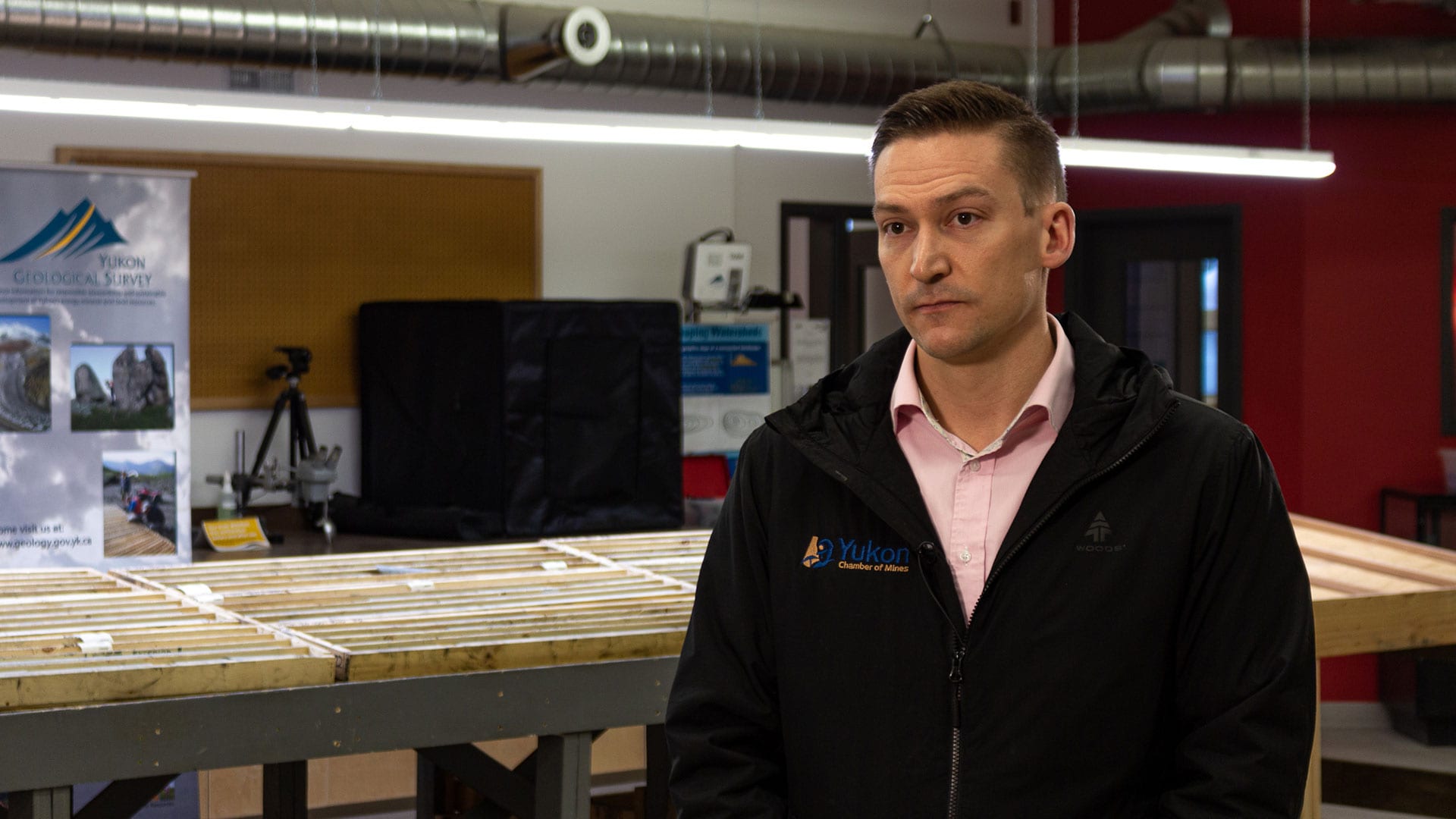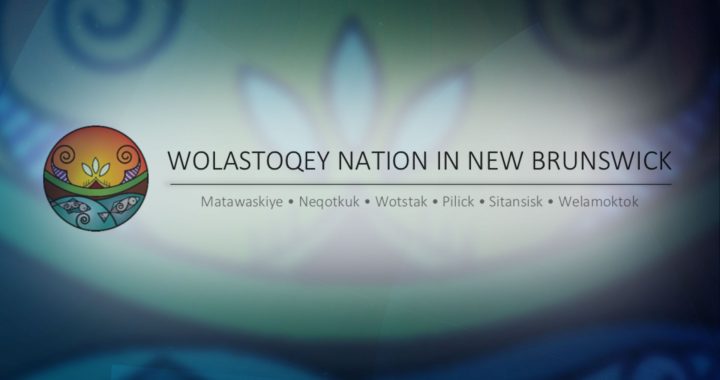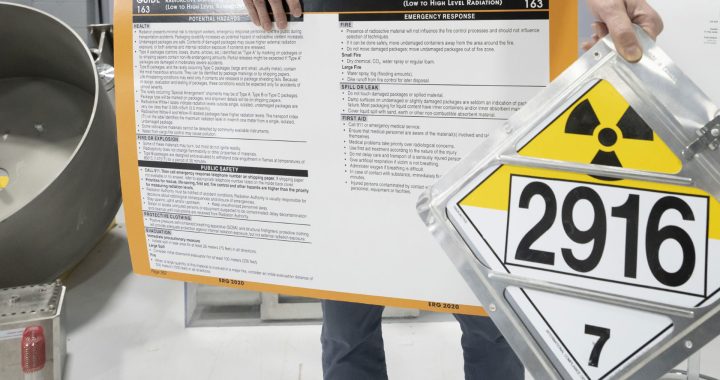Since the Klondike Gold Rush, prospectors have essentially been allowed stake a mining claim anywhere in the Yukon under the free-entry system – including places like White River First Nation (WRFN) territory.
Ray Gunness, WRFN’s resource manager, says mineral claims have been staked in White River territory throughout the last several decades without proper consultation or approval from the First Nation.
“The mining legislation in the Yukon really needs to be updated. We haven’t seen a substantial and appropriate update since the early 1900s,” he told APTN National News.
Now, the territory’s new Mineral Development Strategy (MDS) is hoping to shape the future of mining so First Nations like White River’s voices are heard when it comes to mineral development.
The MDS is a final draft document published on Dec. 28. It includes 79 extensive recommendations targeted at improving mineral development in the territory, especially in regards to Yukon First Nations.
Recommendations range from abolishing antiquated mining legislation, installing robust reclamation policies and providing First Nations with proper financial returns.
“We’re really trying to take a balanced approach as to what the mineral development sector could look like in the Yukon,” says Math’ieya Alatini, one of the three members on the MDS’ independent panel.
“We want to make it attractive and stable while acknowledging First Nations’ rights.”
The document was born out of a Mining Memorandum of Understanding (MOU) signed in 2017 between the Yukon government, the territory’s 11 self-governing First Nations and the Council of Yukon First Nations (CYFN).
The MOU is intended to advance the management of the territory’s mining and exploration sector while ensuring the approach aligns with the Final Agreements, which are modern-day treaties that outline Yukon First Nations’ rights within their traditional territories.
The general public was invited to make submissions to the MDS until late last month. Several First Nations including WRFN submitted recommendations aimed at improving mineral development, while also sharing accounts of how poor mineral management has affected their lands and their people.
Skeeter Wright, a mining consultant for First Nations in the Yukon, who also made a submission on behalf of Carcross/Tagish First Nation, says it’s major step in the right direction.
“(First Nations) want to see their traditional use of these areas. They want to see their culture, they want to see their traditional practises respected,” he says.
Gunness, who wrote WRFN’s submission, says “I think it could really shape the future to hold that industry to the highest standard.”
New strategy scraps archaic mining acts

One of the most striking features of the MDS is its recommendation to get rid of the Quartz and Placer mining acts, the two acts that stipulate how mining operates in the territory, and replace them with new legislation.
The acts were formed in the 1980s, and despite numerous amendments over the years, they still include provisions that date back to the Gold Rush era of the 1890s, like the free-entry system.
The free-entry system means that essentially anyone can stake a claim anywhere in the Yukon, unless it’s been withdrawn by government legislation, like territorial parks, municipal zones or particular settlement lands.
Once a claim is staked, prospectors are allowed to retrieve all minerals beneath the surface.
Wright says the free-entry system is a “free-for-all – plain and simple.”
“The free-entry system for the most part was established as a way of getting people to move into those uninhabited wilderness areas. The only problem is, and certainly in the Yukon, they weren’t uninhabited. There was an awful lot of people living out there, the First Nations people,” he says.
Wright says the system is a remnant of colonialism that has a dark history harming of First Nations in the past.
“That law reflects an image or an idea that there’s no one here of any importance, ‘so go ahead and stake your claims wherever you want to.’ Once you’ve staked a claim you had the right to mine, and that’s basically the current situation.”
The MDS points out the system is outdated and “a patchwork quilt of amendments have rendered the Yukon’s mineral resource legislation unresponsive to evolving industry circumstances and difficult to enforce.”
The MDS recommends abolishing the free-entry system and installing modernized legislation that will endorse the principles of reconciliation. That includes staking limitations on lands that belong to First Nations, commonly known as Category B lands, where First Nations only own the land’s surface, as well as “constraints” if there’s no written consent from First Nations.
Aligning with First Nation Final Agreements and the Truth and Reconciliation Calls to Action, the document recommends all new legislation pertaining to the Quartz and Placer mining be completed by 2023.
Gunness says of particular interest to WRFN is the MDS’ online map staking proposal, which it notes is “prevalent” in other parts of Canada. It states online staking will allow “the Yukon Government to uphold its court-confirmed obligations to provide advance notice to Yukon First Nations of potential on-the-land exploration activities.”
“They were essentially saying online staking may be a useful tool to curtail the whole issue with free-entry staking,” Gunness says.
“The MDS is recommending the claims would be contingent on first consulting with Yukon First Nations to determine whether the claims in these areas stand to impact any rights or interests that are near and dear to any White River First Nations members. We’re hopeful that that might be a nice change.”
No more cleanups
Another substantial recommendation includes stricter guidelines around reclamation, including mine closure policies and holding mines accountable to ensure environmental cleanups.
For instance, Yukon’s Faro mine, which was in operation from 1969 until 1998, is believed to be Canada’s most polluted mining site. It’s reclamation project is expected to start next year, and will require a massive cleanup effort and will cost more than half a billion dollars.
It’s just one example of how mining companies have exploited the territory in the past, often leaving the cleanup for taxpayers and First Nations to contend with.
It’s a problem that would never have happened if proper reclamation policies were in place.
In WRFN’s submission, it states “For far too long, the (Yukon government) has allowed proponents to develop, propose, and operate their projects in any way they wish.”
The submission also notes how leaving placer mines to revegetate on their own can still be seen decades later, and that some proponents of placer mines consider it best practise to leave the mines un-reclaimed as they argue it “enhances certain habitat, such as for moose.”
WRFN recommends for the Yukon government “to work with (Yukon First Nations) and local communities to establish clear standards for reclamation of placer mining projects.”
The MDS proposes “allocating a portion of a mine’s closure security to support long term monitoring activities, incorporating care and mine maintenance as standard practises and ensuring project proposals indicate how those in the mining industry will “return the mine site to conditions that are as close as possible to the pre-mining state with minimal environmental degradation and no ongoing risk to the environment.”
Speedy land use planning

Perhaps one of the most ambitious recommendations to emerge from the MDS is its suggestion to complete all land use plans in three to five years.
Land use plans originate from the 11 self-governing First Nation’s Final Agreements.
They are a collaborative process between the Yukon Land Use Planning Council, the territorial Government, Yukon First Nations and the Regional Planning Commissions that determines how land should be developed in the territory. It also designates what vicinities are no-go zones, like caribou calving and moose roaming areas.
Lan use planning is complex. In many plans, First Nations territories overlap, and it can entail planning the use of lands which are both category A lands (where a First Nation owns the surface and sub-surface) and category B lands (where a First Nation only owns the surface area.)
Alatini says land use planning is oftentimes a lengthy process, as it typically requires specialized skills in land use planning and some First Nations don’t rank it as a priority.
There are six land use plans in the Yukon. Only the Old Crow plan in northern in Yukon has been completed. The Whitehorse, Teslin, Kluane and Northern Tutchone plans are outstanding. Only the Dawson plan is currently in progress.
The strategy reads “investors hate uncertainty” when it comes to land use planning, and to speed up the process, it recommends completing the remaining land use plans in five years.
It also proposes temporary staking moratoriums and restrictions on land access until the plans are completed.
“If we can get our land use planning done, that is the cornerstone of good management of any sector,” Alatini says.
Another recommendation includes allocating a portion of the $360 million dollars in federal and territorial backing for the Yukon Resource Gateway Project to accelerate the land use planning process. That project is intended to develop the territory’s road system where there might be natural resource potential.
The recommendations are progressive if not unusual for the sector, but Alatini says the Yukon can’t afford to wait.
“The recommendation is really bold,” she says.
“Everyone’s like ‘really? Three to five years?’ It is a little incredulous, but it is one of those things we need to rip the band-aid off.”
Mining industry says timelines “unrealistic”
Ed Peart is president of the Yukon Chamber of Mines (YCM), which advocates for mining in the territory.
YCM provided several recommendations to the MDS, which Peart says he’s concerned are not being listened to.
“We do feel (the mining) industry was maybe left a little bit behind in most of the recommendations,” he says.
A prime example of this would be the timelines presented in the final draft report, which Peart says are “unrealistic.”
Peart says the MDS’ recommendation to amend the Quartz and Placer acts in two to three years “is not going to happen.”
With other Yukon regional land use plans like the historic Peel watershed taking 15 years to complete, Peart says “We don’t feel the timelines associated were proper.”
While the document does delve into royalties which includes reasonable financial profits for First Nations and Yukoners on mining and exploration projects, Peart says it’s not extensive enough.
“That document did not display royalties properly. To leave that out of a document, a public document, I would venture to say it’s not only not right, but it would be irresponsible,” he says.
Peart says the YCM is also worried about the MDS’ recommendation to dip into the Yukon Resource Gateway Project’s funding.
“That money exists for Gateway and it’s very important. That money is meant for the advancement of that project to help unlock the potential of those areas in the Yukon,” he says.
“Our perspective is it’s time to get that Resource Gateway Project going, and we don’t think it’s the right use of that money to divert it from that project to land use planning.”
Peart says if the draft document goes ahead without taking the YCM’s suggestions into consideration, “it’s going to be challenging for industry and mining if it goes through as is.”
MDS pushing ahead
Despite the criticism, Alatini says the strategy will – and must – go ahead.
“We could do more damage by not taking action,” she says.
““We can’t afford to have this uncertainty swirling around everything in land, mineral development, all of it.”
Wright agrees, noting the MDS’ timelines and strategies are “doable.”
“New mineral legislation – definitely doable in the next few years. A regional land use plan, which are a requirement of the final agreements. Those can be done in the next handful of years,” he says.
Wright says the Northwest Territories recently finished a similar implementation which saw nine pieces of land use legislation completed simultaneously.
He also notes the Peel watershed was a lengthy process because it was heavily dependent on using Yukon government staff to do the bulk of the work as opposed to the land use planning commission.
Wright says if you take a close look at the land claims agreements and self-governing agreements in the implementation plans, it’s the land use planning commission that’s actually the party entrusted with doing the majority of the planning work like drawing information from the relevant First Nations governments, the Yukon government and the federal government.
“It’s all funded by the federal government. That’s what the federal government signed off on in regards to the land claims agreement. So yeah, it is doable,” he says.
A final strategy will be released on March 29 where it will be reviewed by its three governing bodies.
Gunness says WRFN is looking forward to a brighter future in mining.
“We are hopeful that this will result in some good outcomes and we’ll really make some significant changes to this archaic mining legislation.









